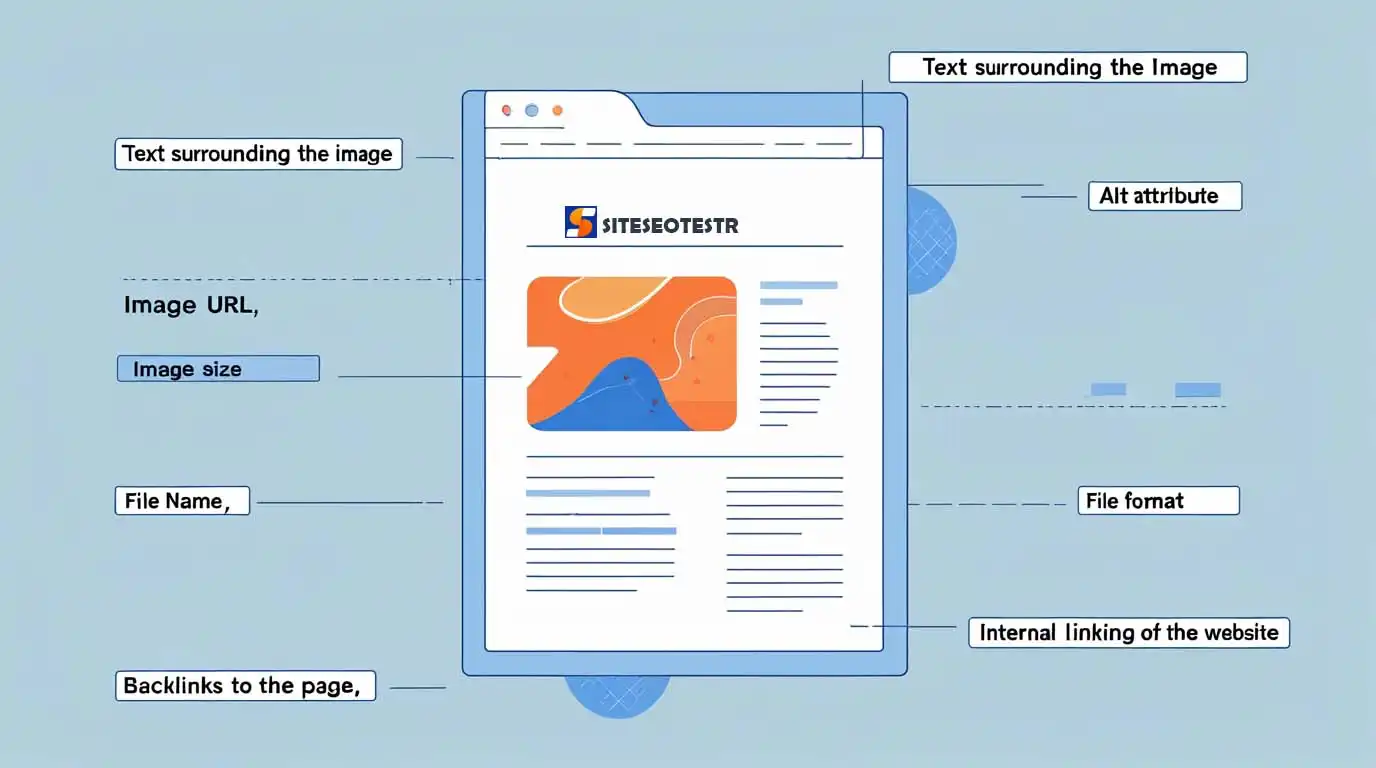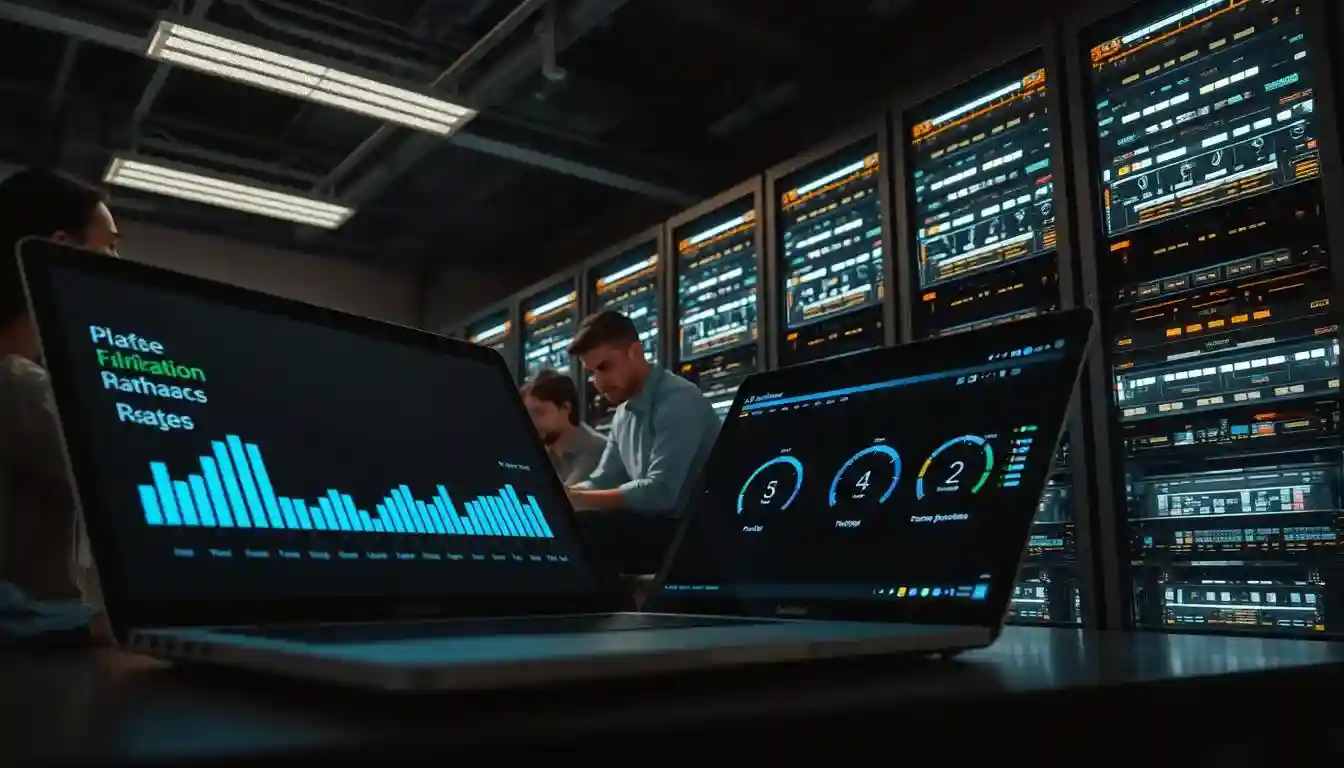Image Optimization for SEO: Best Practices for Faster Load Times

Site SEO Checkup This is a free SEO auditing tool that will help you analyze your web site in a brief time, identify technical and security problems, and provides a score with a detailed report. But it is also important that it has fast loading. Image optimization plays a big role in how quickly your site loads. You can also create a faster and better site by shrinking your images.
Image Optimization for SEO is a big part of making your site better for search engines. It refers to compressing your pictures without compromising their quality. This aids the search engines in locating and ranking your site more effectively potentially leading to an increase in your site ranking in the search results.
Using the most suitable methods of optimization of your images, you are able to achieve faster loading of your web site and enhance your search engine. This paper will discuss the best methods of optimizing your pictures. We shall discuss how to make pictures smaller, name them appropriately, and alt tags.
Key Takeaways
- Optimize images to reduce file size without compromising quality.
- Use descriptive file names and alt tags for better search engine understanding.
- Compress images to improve page load times.
- Choose the right file format for your images.
- Use lazy loading to defer image loading until necessary.
Why Image Optimization Matters for SEO
Effective image optimization is crucial for a website's SEO. It influences page loads, user experience and search engine positioning. In the current internetized age where images hold a vital role, optimization of images is a prerequisite to webmasters and search engine optimization professionals.
Impact on Page Load Speed
Speed of loading pages is also crucial to SEO because Google treats fast pages. The pictures have the ability to slow pages down because of their sizes. Optimization images allow you to decrease the size, accelerate your Web page and retain interest of users.
Compression and correct file format can make a lot of difference.
Influence on User Experience
SEO also takes into account the experience of the user, and pictures have a significant role. Quality and streamlined images ensure that a site is more attractive. Conversely, sluggish or under-optimized images may negatively affect the user experience and increase the number of bounces and time spent on the site.
Implication on Search Engine Rankings
When ranking sites, search engines consider a wide range of factors such as quality of the images, and their relevancy. Images should be optimized and have good alt tags, descriptions and file names which can increase the image search of your site. This would attract more traffic and make your overall rankings better, as it would accelerate page loading, and provide better user experience.
Understanding Image SEO Fundamentals
Learning about image SEO can help you get better search engine rankings. It is an in-depth process that has got some key sections
What Is Image Optimization for SEO
Image optimization for SEO makes images easier for search engines to find. This increases the visibility of a site and its ranking. It entails streamlining image file names, alt text and description to be found more by the search engines.
Key Factors That Affect Image SEO
Several factors impact image SEO, like image file size and format, image dimensions, and image metadata. Optimizing these can greatly enhance image SEO
Common Image Optimization Mistakes
The most frequent ones are use of big, uncompressed images and disregarding of alter text and image definitions. Avoiding these mistakes can improve a website's image SEO.
By grasping and applying these image SEO basics, website owners can boost their online presence. This is also used to enhance their search results rankings.
Performing Effective Image Analysis
In order to make your site quicker, you should be a good analyzer of your photos. It involves scrutinising your photos in trying to identify how to improve and speed up them.
Assessing Current Image Performance
To begin with, monitor the performance of your images at the moment. See their sizes, formats, and the impact they have of slowing your site. Large, uncompressed images have the potential to really slug your site. This is detrimental to the speed of your site and the search engine performance of your site.
Identifying Optimization Opportunities
Check what you have taken in pictures and improve it. You may be required to compress them, convert them into WebP, or resize them to fit on the mobile screens.
Tools for Image Analysis
It is possible to enhance your pictures with a great number of tools. As an example, Google PageSpeed Insights provides the information about the impact of your images on the speed of your site and how to correct it.
Google PageSpeed Insights
The Google PageSpeed Insights is an excellent site to test the speed of your site. It finds methods of improving your pictures and making your website quicker.
Free SEO Checker Tool
The Free SiteSEOTester Tool is also useful. It performs a search on your site, such as the optimization of your images. These tools will allow you to get better acquainted with your images and to make them quicker.
Optimizing Image File Size and Format
Optimization of your images is important to ensure your site loads faster, as well as improve your search results. This involves selecting the appropriate type of file, compression and resizing of the images in the correct manner.
Choosing the Right Image Format
Each image format has its own use. JPEG is great for photos because it handles complex colors well. PNG is better for graphics and images that need to be transparent. WebP is a newer format that offers better compression and works with most browsers.
Compression Techniques That Preserve Quality
Image compressing reduces them hence making your webpage faster. Image compressors such as Floristnear and TinyPNG compress images effectively and do not reduce their quality. Experts state that as long as it is a fine line between file size and quality, Optimizing images is a delicate balance.
Recommended Image Resize Tools
It is also necessary to resize images so that they could fit on your site. This has a wide variety of tools both on the Internet and on your desktop.
Online Resizing Options
Resizing can be done using online programs such as Floristnear.com. When you have to increase and decrease images every now and then, they are useful.
Desktop Applications
Desktop programs such as Adobe Photoshop and the Gimp provide greater control in cases where the images have to be resized frequently. They are professional oriented.
By using these strategies, you can greatly improve your website's image optimization. This will aid your search team and will make your site more user friendly.
Image Optimization for SEO: On-Picture Factors
Image optimization is not only the file names and alt text. It has to be on picture issues which search engines will pick up. The above influences the visibility of your site and the experience of the user.
Image Dimensions and Responsive Design
The size of images plays a significant role in the responsive design. They should be user friendly and easy to fit on various gadgets. Responsive images scale with the size of the screen without distortion and content made available everywhere.
CSS media queries will be necessary to display various sizes of images depending on the device type to make this work. This enhances the user experience and improves SEO through a reduction in bounces and additional engagement.
Color Profiles and Image Quality
Color profile of an image also influences the quality of an image and appearance to users. When the correct color profile such as sRGB is used, images appear the way they are supposed to appear on different gadgets. True color images in high quality enhance user interaction and are professional looking.
Using WebP and Next-Gen Formats
WebP and new image formats are more compressed and the quality of the image is not lost when the file is reduced in size. Pages can be loaded on these formats, which is beneficial to the SEO. WebP support is common in modern browsers, making it a good choice for image optimization.
Image Resolution vs. File Size Balance
There should be a balance between image resolution and file size. The high-resolution pictures appear nice but may add size and slow the pages. You can strike a compromise by compressing pictures and selecting the appropriate formats. This makes pictures display well and assists in search engine marketing.
Optimizing Image Metadata for Search Engines
Enhancement of image metadata is one of the tools that can improve the search engine ranking of your website. It provides search engines with significant details on your pictures. This facilitates indexing by them of your site.
Crafting Effective Alt Text
Image metadata includes alt text, which is a very important aspect. It gives the image of when it cannot be loaded. Good alt text is the use of the appropriate keywords and a concise but clear description. This increases accessibility and makes you image appear in better search results.

Image Title and File Name Best Practices
The name of an image and its file name is also important. Your image may be ranked higher by using descriptive title and file names with keywords. This is clever to insert hyphens in the file names so the search engines can obtain the material.
Caption and Description Optimization
Images have captions and descriptions that are more contextual. By employing the relevant keywords, optimization can make your image more noticeable. Ensure that captions and descriptions are correct, informative and interesting.
RankMath SEO Image Optimization Tips
RankMath SEO is a popular WordPress on-demand plug in. It provides excellent advice in image optimization. RankMath SEO recommends the use of descriptive alt text, file-name optimization, and captions and descriptions. Adherence to these tips can enhance your images to be more search engine optimized as well as aid in the SEO of your site.
Strategic Image Linking and Placement
Good image association and positioning are paramount to enhanced search engine optimization and user experience. With the judicious use of images this will help to make your site more prominent and interesting. This improves the performance of your site.
Internal Linking with Images
Photos can assist users to use your site in a more efficient way. Alt texts and file names should be used with keywords. As an example, the picture of a product can be connected to the page of the product, which is beneficial to users and to search optimization.
Optimizing Image Placement for SEO
The placement of images is very important in terms of both SEO and usability. Pictures ought to be close to the text to which they refer. This makes the content more active and understandable.
Image Galleries and Carousels: Best Practices
Carousels and galleries of images are excellent in displaying a lot of images without overloading a page. Lazy loading is used to accelerate page loading. Ensure that navigation is user friendly.
Using Images in Content Marketing
Your content can be more engaging and shared by adding images to it. Pictures are used to clarify complicated concepts, provide emotion, or provide attractiveness.
Image Loading Techniques for Better Performance
The speed of page loading has become crucial. Image loading techniques are important to SEO. Speaking of which, user experience and search ranking may be enhanced by making images load much faster.
Implementing Lazy Loading
Lazy loading postpones loading of images until the time they are required. This increases the speed of loading of webpages. This can be done using JavaScript or HTML attributes such as loading="lazy"
Websites that have a large number of images can be lazy loaded. It loads pages faster particularly on long scrolling websites.
Using Content Delivery Networks (CDNs)
A Content Delivery Network (CDN) keeps the pictures in servers on a globally dispersed basis. This enhances faster loading of images among users. It is suitable to the global websites.
The CDNs also assist your server, by offloading the server. This ensures your site is more scalable and is capable of handling traffic spikes.

Browser Caching for Images
Browser caching is a technique of storing images in browsers of the users. By doing so, images will be loaded faster when repeating the visit. This can be configured with cache-control.
Browsing caching reduces server request. It results in increased page loading speed and improved user experience.
Google's Core Web Vitals and Image Loading
Google User experience is measured through Core Web Vitals. An important one is image loading, as is the case with Largest Contentful Paint (LCP). LCP examines the speed at which the largest image downloads.
Image loading should be enhanced as it is crucial to the higher scores of Core Web Vitals. Optimize with lazy loading, Content Delivery Networks and browser caching. This helps your search rankings as well as enhances the performance and user experience of your site.
Step-by-Step Guide to Image Optimization Workflow
This stepwise guide would help you make your images SEO-friendly. Image optimization has a number of important steps. It begins with preparation and is followed by post-upload checks.
Pre-Upload Optimization Process
The initial one is the pre-upload stage. In this case, you have to reduce and shrink images before you upload them. With programs such as Adobe Photoshop or Floristnear.com, it becomes possible to reduce the size of files without compromising their quality.
It is also important to select a proper file format. JPEG is preferable in photos whereas PNG is preferable in graphics with transparent background. Understanding the strengths of any of the formats assists you in making better decisions.
CMS-Specific Image Settings
Once you have prepared your pictures, configure your Content Management System (CMS). Most CMS platforms, like WordPress or Joomla, have built-in tools for image optimization. You can set compression or use auto resizing.
Using CMS plugins can also improve image optimization. One can use such a plugin as Smush or Imagify with the ability to automatically compress images so that the image is of the appropriate size.
Post-Upload Checks and Adjustments
Check Pictures after uploading. Ensure that they are rightly resized and compressed. As well, make sure that there are no broken image links or loading problems Checker.
The issues of indexing of your images can be located with the help of Google Search Console. This allows you to do the required changes.
Optimizing for Long-Tail Image Search Queries
In order to increase the SEO of your images, optimize them in terms of long-tail searches. Use relevant descriptive file names and alt text.
For example, rename the picture seo-image-optimization-tips.jpg rather than IMG_1234.jpg. This assists search engines in getting to know more about your images.
SafeSearch Considerations
Finally, consider safe search preferences when optimizing your pictures. Ensure that your contents comply with search engine requirements so that they are not filtered out.
By following this guide, you can create an effective image optimization workflow. This will enhance performance of your site and rankings in search engines.
Measuring and Maintaining Your Image Optimization Success
To keep your image optimization efforts going strong, it's key to check in regularly. Check page load time, user interaction with your site, as well as your search engine rankings.
Measuring these metrics will make you identify what should be worked on. You can then tweak your image optimization plans. Google PageSpeed Insights and SEMrush are very insightful to make decisions.
Keeping up with image optimization success takes ongoing work. This involves reworking and optimization of images, ensuring that they are compatible with any device, and new formats such as WebP. In so doing, you will ensure that your site is fast and attractive to users and the search engines.
By measuring and maintaining your image optimization success, you can make your website better. This will bring in more people to your site.
FAQ
What is image optimization for SEO?
Image optimization for SEO makes images more visible and ranked on search engines. It involves improving file size, format, and metadata. This makes images more friendly to search engines.
Why is image optimization important for page load speed?
Image optimization is key for fast page loading. Large, uncompressed images slow down websites. This hurts user experience and search engine rankings.
How do I choose the right image format for SEO?
The right image format depends on the image type. JPEG is best for photos, while PNG is for graphics. WebP offers better compression and quality.
What is lazy loading, and how does it improve image loading?
Lazy loading loads images only when they're in view. This reduces initial load time and boosts page performance. It's a way to improve image loading by loading fewer images at once.
How can I optimize image metadata for search engines?
To optimize image metadata, write effective alt text and use descriptive file names. Also, optimize captions and descriptions. This helps search engines understand your images.
What are the best practices for image placement and linking?
Use images to support your content and optimize their placement for user experience. Also, use internal linking with images to boost SEO.
How can I measure the success of my image optimization efforts?
To measure success, use tools like Google PageSpeed Insights to monitor image performance. Adjust your strategies to keep improving.
What is the impact of image resolution on file size, and how can I balance them?
Higher image resolutions mean larger files. To balance, compress images while keeping quality good. Use image resize tools for this.
How do I optimize images for long-tail image search queries?
For long-tail queries, use specific keywords in alt text, file names, and captions. Make sure images are relevant to the query.
What are the benefits of using Content Delivery Networks (CDNs) for image loading?
CDNs improve page performance by reducing the distance to image files. This leads to faster load times and better user experience.